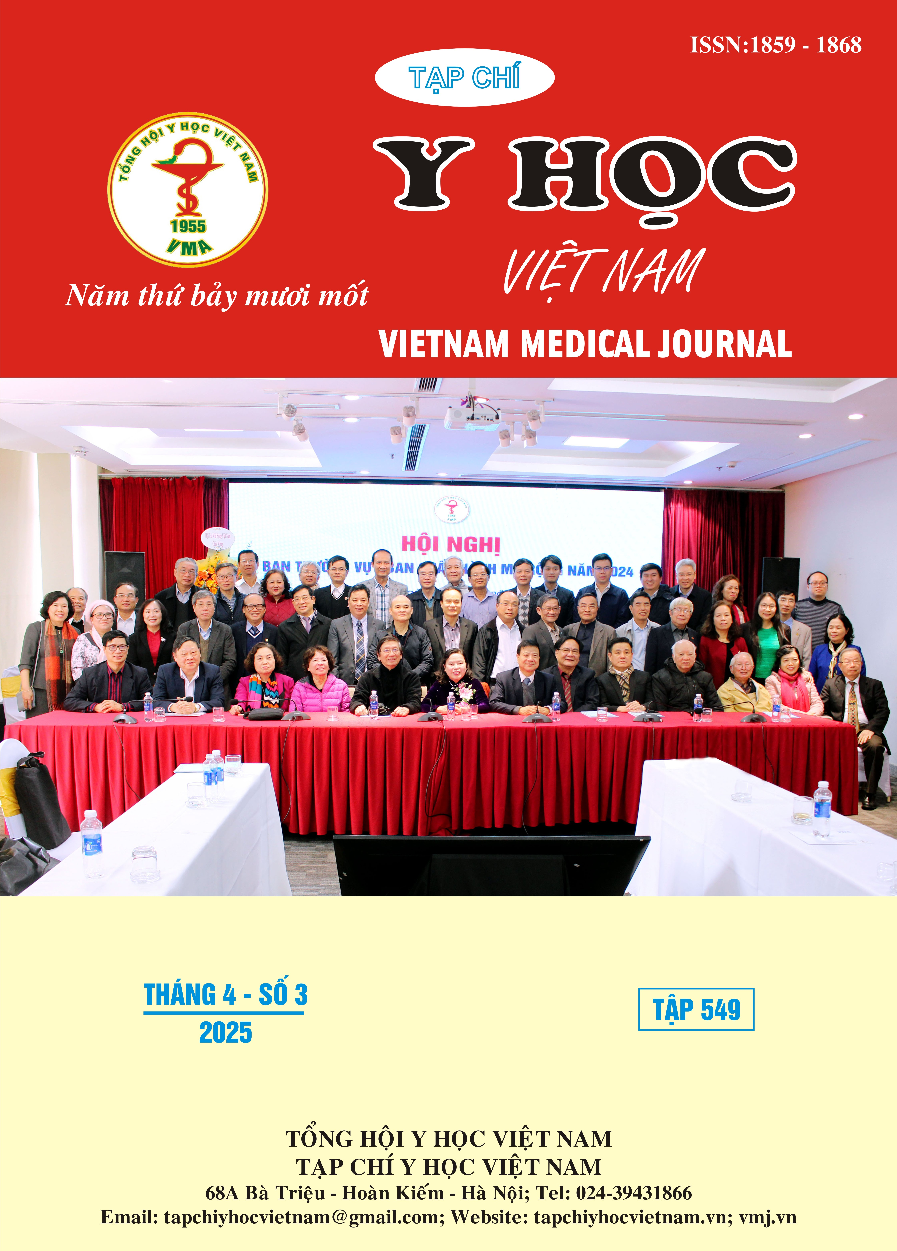CLINICAL, PARACLINICAL CHARACTERISTICS, AND DIGITAL SUBTRACTION ANGIOGRAPHY IMAGING OF PATIENTS WITH
Main Article Content
Abstract
Objective: Cesarean Scar Pregnancy (CSP) is a condition in which the gestational sac implants at a previous cesarean section scar, posing risks of massive hemorrhage and uterine rupture, which can be life-threatening. This study aims to describe the clinical, paraclinical characteristics, and Digital Subtraction Angiography (DSA) imaging findings of CSP patients to optimize treatment strategies. Methods: A cross-sectional study was conducted on 37 CSP patients (grade III-IV) who underwent uterine artery embolization at the Center for Diagnostic Imaging – Nuclear Medicine, Viet Duc Friendship Hospital. Clinical symptoms, laboratory findings, Doppler ultrasound, and DSA imaging before and after embolization were analyzed. Results: Among the patients, 52.8% were asymptomatic, 43.2% had vaginal bleeding, and 8.1% experienced abdominal pain. The mean beta-hCG level was 66.604 ± 59.828 mIU/mL. Doppler ultrasound detected increased vascularity in all cases, with 45.9% showing high vascularization and 16.2% having penetrating vessels. DSA imaging revealed that all cases had blood supply from bilateral uterine arteries, with 10.8% having unilateral dominance. The CSP blood supply classification based on DSA findings was as follows: grade 1 (48.6%), grade 2 (27.0%), and grade 3 (24.3%). Conclusion: CSP presents with diverse clinical manifestations. Transvaginal ultrasound remains the primary diagnostic tool, while DSA provides detailed insights into the blood supply to the gestational sac, supporting effective embolization planning.
Article Details
Keywords
Cesarean Scar Pregnancy, Digital Subtraction Angiography, Doppler ultrasound, uterine artery embolization
References
2. Rotas MA, Haberman S, Levgur M. Cesarean Scar Ectopic Pregnancies: Etiology, Diagnosis, and Management. Obstetrics & Gynecology. 2006; 107(6): 1373-1381. doi:10.1097/01.AOG. 0000218690.24494.ce
3. Ash A, Smith A, Maxwell D. Caesarean scar pregnancy. BJOG: An International Journal of Obstetrics & Gynaecology. 2007;114(3):253-263. doi:10.1111/j.1471-0528.2006.01237.x
4. Jurkovic D, Hillaby K, Woelfer B, Lawrence A, Salim R, Elson CJ. First-trimester diagnosis and management of pregnancies implanted into the lower uterine segment Cesarean section scar: Cesarean scar pregnancies. Ultrasound Obstet Gynecol. 2003;21(3):220-227. doi:10.1002/ uog.56
5. Marchand GJ, Masoud AT, Coriell C, et al. Treatment of Cesarean Scar Ectopic Pregnancy in China with Uterine Artery Embolization-A Systematic Review and Meta-Analysis. J Clin Med. 2022;11(24):7393. doi:10.3390/jcm11247393
6. Gao L, Huang Z, Gao J, Mai H, Zhang Y, Wang X. Uterine artery embolization followed by dilation and curettage within 24 hours compared with systemic methotrexate for cesarean scar pregnancy. Int J Gynaecol Obstet. 2014;127(2): 147-151. doi:10.1016/j.ijgo.2014.05.005
7. Gao F, Lu Y, Guo X, et al. Complex Blood Supply Patterns in Cesarean Scar Pregnancy: Insights from Digital Subtraction Angiography Imaging. Med Sci Monit. 2023;29:e940133-1-e940133-10. doi:10.12659/MSM.940133


